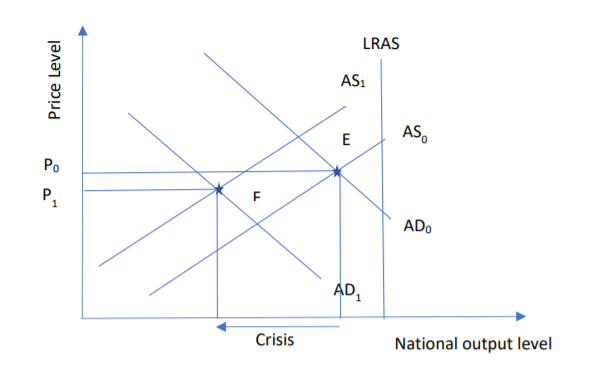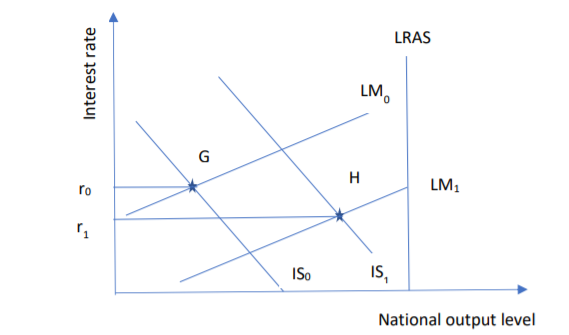Introduction
The Canadian Liberal Party has Prime Minister Justin Trudeau at its head. It was he who brought the party to majority rule by 2015, but by 2019 the number of Liberal parliamentary seats had declined (Jeffrey, 2021). By 2021, Justin Trudeau called early elections, hoping to regain a parliamentary majority; however, liberals failed to achieve this goal, pursuing even greater pluralism to preserve minority power (Murphy, 2021, Journet, 2021). This paper provides a macro-analysis of the Canadian Liberal Party, namely the promises made by the party in the context of the economy.
Platform Aspects
The main aspects of the platform are the following provisions or communication. First of all, the Canadian Liberal Party seeks to return the number of jobs to pre-pandemic levels (Canadian Liberal Party – Our Platform, 2021). As a result, complex work is expected in two directions: the fight against the virus in medicine and society; and economic transformation. In order to evaluate this activity, it is necessary to consider each of the activity guidelines in more detail. At the medical level, the fight against the virus includes mandatory vaccines on airplanes, trains, and the federal government service, as well as better ventilation technologies in crowded places like schools (Canadian Liberal Party – Our Platform, 2021). At the economic level, the party is about to rethink tax fairness, labor inclusion, focusing on under-represented workgroups, and better insurance schemes to keep workers financially safe (Canadian Liberal Party – Our Platform, 2021). The plans are pretty severe, and there is a clear emphasis on the working conditions of workers.
In order to determine the adequacy and relevance of these statements from the point of view of the economy, it is necessary to refer first of all to the financial indicators of Canada and compare them in the context of past years. Canada’s gross domestic product dropped significantly in 2020 due to pandemic restrictions that significantly affected the entire global economy (Trading Economics – Canada GDP, 2021). However, by 2021, there will be a gradual improvement. However, it would take a little less than three years to bring GDP back to the pre-pandemic level of $ 1,742 million using a linear regression model (Trading Economics – Canada GDP, 2021). The pre-pandemic Canadian unemployment rate was approximately 5.5% of the working-age population (Chakraborty et al., 2021). The jump happened by more than 10 percent and is gradually dropping down to the present day. Currently, the level is 6.8%, and, in general, the positive trend of decrease continues (CTV News, 2021). According to the Okun law, a 2% decrease in GDP growth leads to a 1% increase in unemployment (Benos & Stavrakoudis, 2021). Carrying out simple calculations, it can be seen that a 6% decrease in GDP gave a sharper increase in unemployment, which may be due to the specifics of the pandemic; however, the recovery is proceeding at a faster pace. This fact suggests that it will be quite possible to achieve pre-pandemic unemployment rates within three years and even faster.
Analysis Models and Concepts
For this work, three models and two concepts were analyzed to evaluate the party’s claims. First, Canada’s AD / AS model was analyzed, which reflects the impact of the pandemic. Figure 1 shows that the equilibrium point E, before the introduction of pandemic restrictions, practically reached the production level under conditions of total employment. Demand fell to the AD1 level due to a decrease in the purchasing power of the population, which is a consequence of unemployment and the suspension of activities in various sectors. Government restrictions have also lowered supply levels, signaling negative production growth. A new equilibrium point F was found, which speaks of a possibly high level of inflation, but in fact, quite the opposite. A forced drop in demand and, along with it, supply leads to low rates of inflation. As a result, the state’s assets should be directed to the primary goals of preserving the health of the population and the economy. It is in the party’s interests to return to the previous level of the equilibrium point as soon as the situation with the virus makes it possible to remove certain restrictions.

After considering the supply and demand model, it is necessary to turn to the concept of fiscal and monetary credit policy. Figure 2 shows a reflection of Canada’s economic policies and long-term and short-term responses to change (Aziz et al., 2021). The nature of state aid is of an emergency nature, just like the nature of a global disaster—the broad package of measures introduced at the federal level signals a fiscal expansionary policy. Banks have also taken several reactive actions, usually by lowering the discount rate (Gallacher & Hossain, 2020). Economic recovery, which can be indirectly tracked through GDP and unemployment, is proceeding quite quickly. It is mainly due to the actions taken together in both the fiscal and monetary policy of the country. The work of the party, as a result, will be favorable in terms of additional medical funding. Tax reforms are seen as less critical given the current pace of recovery, while social issues of inclusiveness will have more time and energy to tackle.
According to Figure 2, the support of companies and the preservation of employment insurance allow the equilibrium point G to approach point H. speakers. In this case, low inflation is also expected, which creates an environment and an opportunity for this indicator to recover (Abel et al., 2013). However, much depends on the specifics of actions against the virus: how quickly the vaccine will be developed and how quickly it will become available to the entire population, not only in Canada.

The concept of saving identity is hardly applicable to this case since savings in such a situation can hardly accumulate. Nevertheless, despite the government spending in support of the relevant business industries and, above all, medicine, the Liberal Party will provide maternity leave with a payment of $ 10 a day (Canadian Liberal Party – Our Platform, 2021). The consumption of these savings implies the restoration of the shaky demographic situation as a result of the pandemic and the stimulation of the purchasing power of Canadian families, which constantly moves the economy in a positive direction.
Smoothing consumption for this situation also turned out to be quite problematic since consumers will not be able to transfer consumption from periods of high to low income shortly. On the other hand, shortly, an increase in wages and labor prices, in general, is expected due to various restrictions, the lack of foreign workers, and the need to resume production. However, instability and lack of predictability are dictated by the specifics of the global problem and not by economic issues that are only a consequence. Therefore, applying this model, and also considering that the party is going to stimulate purchasing power and restore the demographic situation, the outlook looks positive. In general, it is possible to conclude that the activities of the party, as well as the plans of the liberals, are in a reasonably high degree consistent with the current economic situation in the country, as well as with its dynamics, prospects, and theoretical models of recovery.
Conclusion
This paper analyzed the platform of the Canadian Liberal Party led by Justin Trudeau through the prism of the country’s economy. The price and inflation rate in the country remain low due to the simultaneous adverse shock to supply and demand. The return of the economy to the natural level of production is proceeding at an expeditious pace due to the speed of reaction of the state and banks’ fiscal, monetary, and credit policies. Canada’s leading trends and approaches to combat the virus and how these trends affect the actions of politicians and parties, in particular, are presented. The plans of the Liberal Party were assessed in terms of the dynamics of changes in the country’s leading economic indicators, which generally signals the correct vector of the state’s activity. Saving identity and smoothing of consumption in the context of the party’s plans show positive dynamics in the long term, and therefore, while maintaining the vector of activity, the party has high chances for a majority in the next elections.
References
Abel A. B., Bernanke B., Croushore D. (2013). Macroeconomics. 8th Edition. Pearson.
Aziz, N., Barber, T., & Stopes, M. (2021). COVID-19 Pandemic Recession, Policy Response, and Recovery: A Canadian Perspective. Web.
Benos, N., & Stavrakoudis, A. (2020). Okun’s law: Copula-based evidence from G7 countries. The Quarterly Review of Economics and Finance. Web.
Canadian Liberal Party – Our Platform (2021). Web.
Chakraborty, T., Chakraborty, A. K., Biswas, M., Banerjee, S., & Bhattacharya, S. (2021). Unemployment rate forecasting: A hybrid approach. Computational Economics, 57(1), 183-201.
CTV News. (2021). Jobs report: Canadian economy added 31000 in October. Web.
Gallacher, G., & Hossain, I. (2020). Remote work and employment dynamics under COVID-19: Evidence from Canada. Canadian Public Policy, 46(S1), S44-S54.
Jeffrey, B. (2021). Road to Redemption: The Liberal Party of Canada, 2006–2019. University of Toronto Press.
Journet, P. (2021). Regardez la carte électorale de 2019 et celle de 2021. La Presse. Web.
Murphy, J. (2021). Canada election: Trudeau stays in power but Liberals fall short of majority. BBC News. Web.
Trading Economics – Canada GDP (2021). Web.